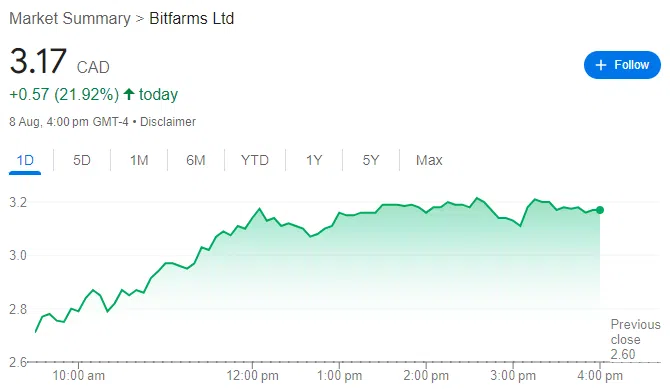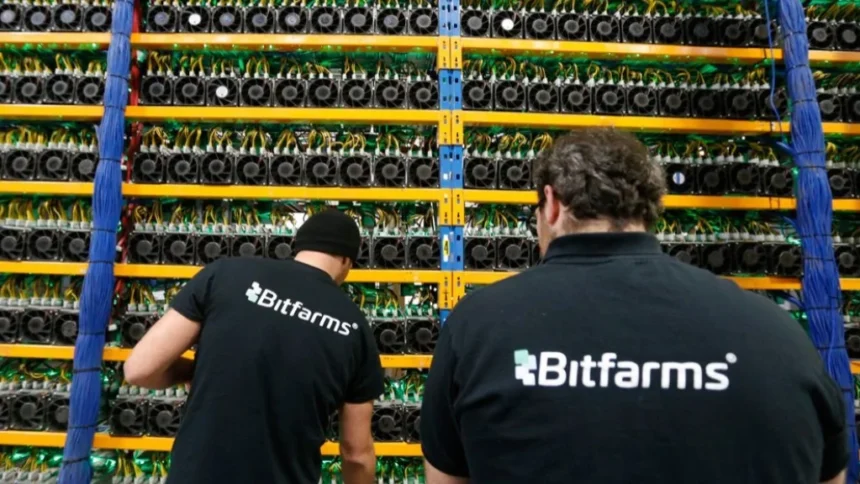On August 8, 2024, Bitfarms, a Canadian Bitcoin mining company, saw its stock price rise nearly 22% after reporting better-than-expected second-quarter earnings. The positive results surprised analysts and led to a significant increase in the company’s stock value.
Bitfarms reported a loss of 7 cents per share for Q2. This was better than the 11 cents per share loss that analysts had forecasted. This unexpected improvement in earnings helped drive the stock price up sharply.

Ben Gagnon, the new CEO of Bitfarms, announced on social media that the company is continuing to grow and expand. He mentioned that Bitfarms is looking into new opportunities beyond Bitcoin mining, including high-performance computing (HPC) and artificial intelligence (AI).
Despite the stock surge, Bitfarms faced some difficulties in the second quarter. The company’s revenue was $42 million, which was a 16% decrease from the previous quarter. This drop in revenue was due to the Bitcoin halving event on April 19, which reduced mining rewards from 6.25 BTC to 3.125 BTC per block.
The company also reported an operating loss of $23.6 million. This loss included $46 million for the accelerated depreciation of older mining equipment. However, Bitfarms was able to mine 614 BTC in Q2, worth about $37 million. The cost to produce each Bitcoin increased to $47,300, up from $27,900 in the first quarter.
In July, Bitfarms saw a 34% increase in Bitcoin earnings compared to the previous month. The company mined 243 BTC worth $14 million, compared to 189 BTC valued at $11 million in June. Additionally, Bitfarms’ hashrate, which measures mining power, grew to 11.1 EH/s from 6.5 EH/s.
Gagnon highlighted the new site in Sharon, PA, and the company’s expansion efforts in South America. He predicted that Bitfarms could reach over 35 EH/s in hashrate by 2025, a 67% increase from their year-end target of 21 EH/s.
Looking ahead, Bitfarms plans to continue growing its presence in the U.S. and exploring new areas beyond Bitcoin mining. The company is focused on expanding and adapting to new opportunities in technology.













